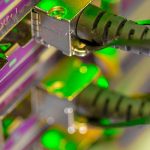Oxford Semantic Technologies embodies the vision Matt Clifford had when he crafted the government’s 50-point AI opportunities action plan. Founded in 2017 by three University of Oxford professors—Ian Horrocks, Boris Motik, and Bernardo Cuenca Grau—the company brings a fresh approach to data discovery, primarily through Knowledge Representation and Reasoning (KRR). This branch of AI focuses on accurate and explainable decision-making using data alongside expert knowledge, unlike machine learning, which relies heavily on recognizing patterns in data.
In July 2022, Samsung Electronics acquired Oxford Semantic Technologies, highlighting the technology’s market potential. Horrocks spoke at last month’s Galaxy Unpacked event, which unveiled Samsung’s Galaxy S25 smartphone. He described the experience as “pretty amazing,” reflecting years of dedicated research.
What stands out about their technology is its ability to operate without heavy computational demands. Horrocks explained that Samsung was particularly interested in their knowledge graph system because it can function right on a smartphone. This means sensitive personal data doesn’t have to be sent to the cloud for processing. With on-device AI, users maintain control over their information, which stays on their device and remains unseen by external parties.
The notion that AI can be effective without relying on massive, expensive data centers is shifting perspectives within the industry. The emergence of China’s DeepSeek platform is a key example, proving that AI can be implemented economically. This revelation has shaken the market, particularly as server manufacturers and companies like Nvidia had previously forecasted growth based on high demand for their premium graphics processing units (GPUs).
When discussing DeepSeek, Horrocks remarks on its challenge to traditional beliefs that generative AI is solely about compute power. Anyone can download DeepSeek’s open-source version and run it on a personal computer. The cloud-based version, priced at only $0.14 per million tokens, significantly undercuts many established large language models.
Meanwhile, the U.S. has halted high-end chip exports to China, aiming to curb Chinese advancements in AI. As more information about DeepSeek surfaces, it’s noteworthy that its R1 model utilizes Huawei’s Ascend 910C chips for inference, regarded as less powerful than Nvidia’s offerings. Despite this, benchmarks suggest DeepSeek performs on par with OpenAI’s models while claiming better operational efficiency at a lower energy cost.
Regardless of ongoing sanctions, DeepSeek’s existence shows that a large language model can function on modest hardware, downloadable from open-source platforms like GitHub. Smaller versions can operate offline on PCs and Macs.
Horrocks and his team have pushed the envelope even further. Their RDFox technology requires minimal processing power and can run directly on smartphones. One of the challenges they tackled involved integrating logical reasoning into a compact model, leading to the development of RDFox.
Collaborating with Boris Motik, they explored modern computer architecture and innovative algorithms to solve this problem. A key advantage RDFox shares with DeepSeek is that it processes potentially sensitive data locally, keeping it off the public cloud. Users decide what the AI can access and ensure their personal information isn’t shared externally.
While it’s too soon to gauge the full impact of on-device AI, its potential is clear. It’s already enhancing web searches, and we’re only beginning to see the possibilities once millions carry AI on their devices. For instance, the Galaxy S25 features functionality that summarizes daily activities, which users may find beneficial.
Horrocks emphasizes the importance of integration across devices, mentioning that a wearable could learn a user’s daily routine while exercising or walking the dog. This functionality opens up exciting opportunities for Samsung.









